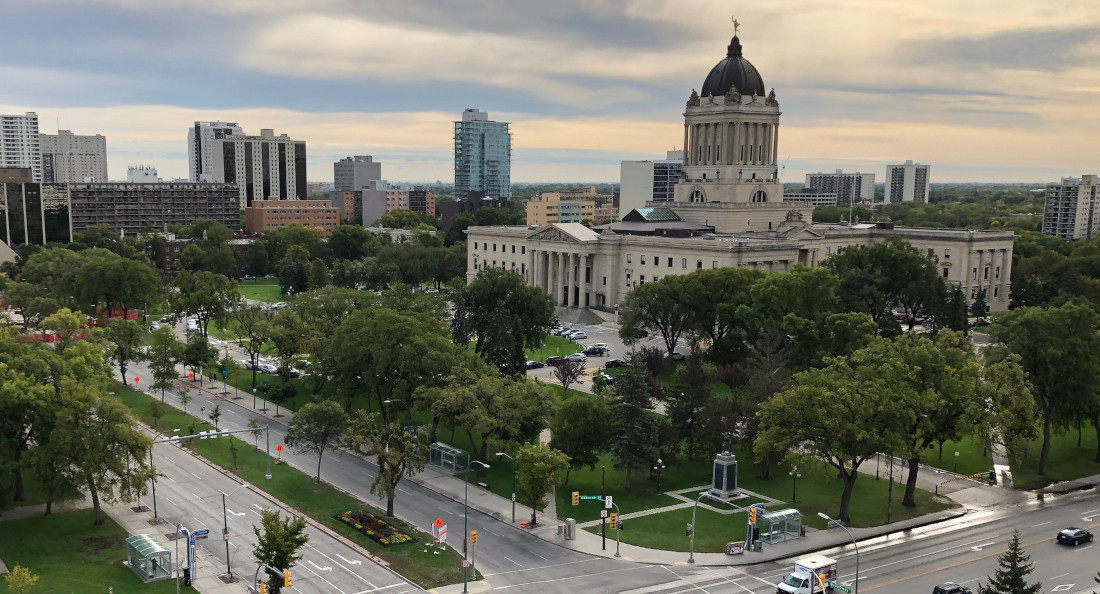A nightmare for elm trees
One green city
In front of Kilter Brewing Co. stands a beautiful elm tree. It’s taller than the building, and its branches spread out to shade nearly all of the patio. Right now, it’s covered in artwork from visitors during Nuit Blanche. Initials within hearts, smiley faces and abstract squiggles decorate the trunk and limbs, but, unfortunately, so does a stark, orange spray-painted dot in the middle of the trunk.
Like the laser sight of a sniper the orange dot marks a tree with a death sentence.
The orange dot marks trees that have contracted Dutch elm disease (DED) and are set to be taken down at the end of the season to prevent the fungus from spreading to other trees. DED kills trees by clogging their water and nutrient system, choking them from the inside.
The City estimates that DED has killed 33,000 trees since 2016.
Besides being beautiful, an urban canopy helps keep the city cooler, filter air pollution and reduce stormwater runoff. As the effects of the climate crisis become more noticeable, an urban forest can help make living in cities more manageable.
Lately, both the municipal and federal government have made efforts to prioritize urban forests. On Sept. 26, Mayor Scott Gillingham announced the Home Grown Grant, an initiative offering $20,000 for large-scale planting projects on public land funded by the Government of Canada’s 2 Billion Trees program.
According to Gillingham, the City is on track to plant 15,000 trees in 2023, compared to an annual average of about 3,500 a few years ago.
Replacing fallen trees from the canopy as quickly as possible is a great step, but it’s also important to plant the right kinds of trees.
One of the reasons DED has become such a problem is due to the practice of monoculture, planting a single species in an area. Had the City originally planted different species, fewer trees would be at risk, and the urban forest would be more resilient to potential threats.
“The best way to make our canopy resilient is to plant a diverse range of species, specifically species that are resilient to forest pests and diseases: native tree species such as the Manitoba maple (boxelder), American linden and hackberry,” Patrick Carty, program coordinator and arborist on staff at Trees Winnipeg, says.
The solution isn’t as simple as replacing every tree felled by DED. A tall tree in front of a house can provide enough shade that residents inside don’t always need to turn on the air conditioning. A mature live tree can absorb 48 pounds of carbon dioxide in a year. A newly planted sapling can’t.
“It is extremely important that we protect our mature forests before focusing on planting new trees. It’s great that there is so much funding for planting new trees, mostly from the federal government’s 2 Billion Tree program, but focus still needs to be on retaining old growth,” Carty says.
One way the City can prevent the spread of DED is regular pruning. Ideally, this is done every seven years but, right now, the City is pruning trees every 31 years, leaving mature trees susceptible to disease.
While the planting grants are promising, the City needs to recognize that it cannot simply replace mature trees with new saplings or plant another monoculture that will be susceptible to other threats. We should be fostering a strong and resilient urban forest that will be able to last.
Allyn grew up on Treaty 1 territory. It’s pronounced uh-lyn lions.
Published in Volume 78, Number 05 of The Uniter (October 5, 2023)







